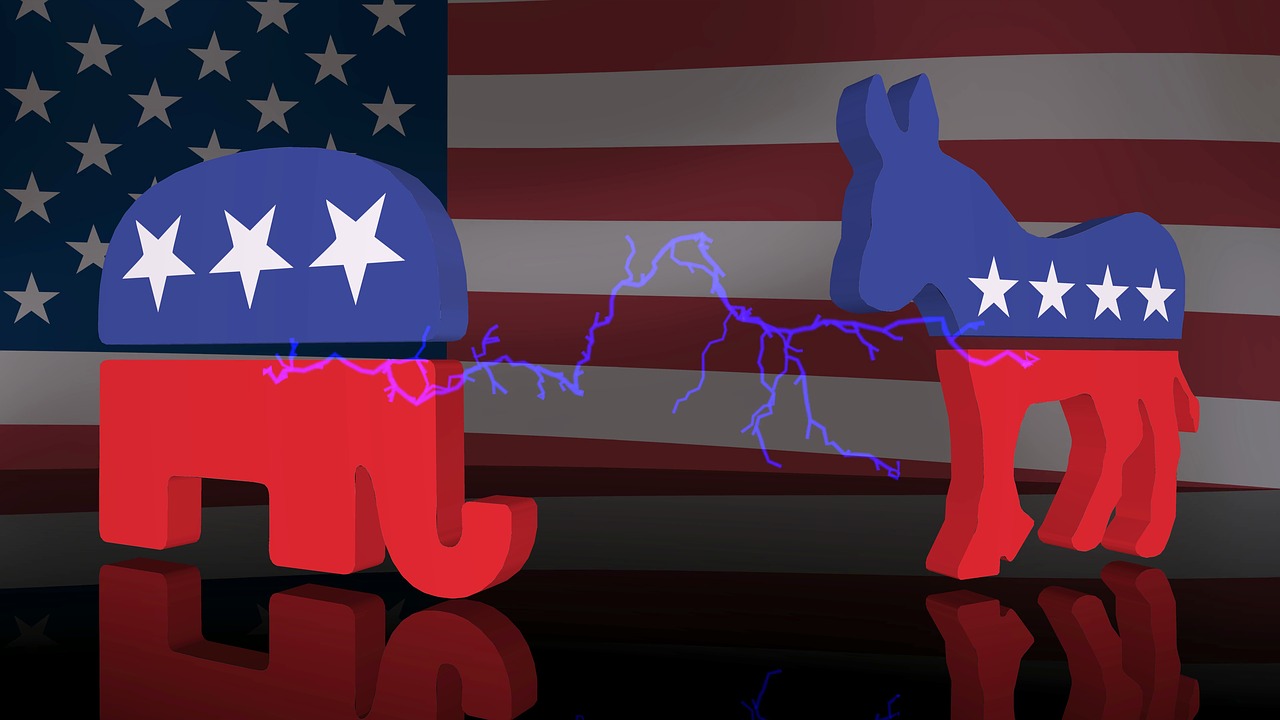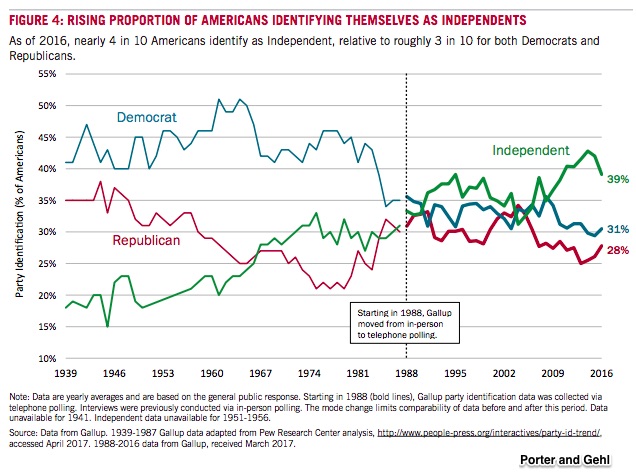Asked to name two firms that dominate an industry, we could start with Coke and Pepsi. Next, we could add FedEx and UPS, or Boeing and Airbus, or Visa and MasterCard. There is one pair though that we should have included but did not.
The Republicans and the Democrats.
Two-Firm Power
Harvard’s Michael Porter is famous for using “five forces” to judge businesses’ competitive power. Now he tells us that they also can apply to politics. Just like the firm, we need to assess the power of buyers and suppliers. We should see if new entrants and substitute products are a threat. And lastly, we have to consider the rivalry among competitors.
In politics, Dr. Porter sees the two major parties competing during elections and when they govern. Among their five “buyer” groups are the primary voters, the average voters, and the non-voters. However, the largest blocs of voters aren’t the most important. Instead, it’s the primary voters and then the donors and the special interests.
Similarly, on the supply side, the major participants have considerable money and power. They include TV, cable, newspapers, social media, and the people who directly contact voters. At the federal level, spending on “supply” for the 2016 two-year election cycle was close to $16 billion. It generated approximately 19,000 jobs for lobbyists, campaign workers, consultants, and other staffers. There were close to 1,000 organizations with consulting contracts.
Meanwhile, there is little competition from upstart entrants and substitutes. Since the Republicans in 1854, we’ve had no new major political party. The Progressives (1912) and the Reform Party (1992) came and went. The reason? Size, money, connections with suppliers, and a recognizable “brand” are formidable entry barriers.
The Results
As an industry, politics is big business. But unlike other successful big businesses, they’ve preserved their power by catering to the extremes rather than the vast center:
Consequently, bipartisan cooperation has declined:
Our Bottom Line: Duopoly
An economist would blame it all on duopoly. As a market structure whose two dominant participants have considerable power, duopoly is responsible for how Coke and Pepsi and the Democrats and Republicans behave.
You can see below that duopoly is close to monopoly on a competitive market structure continuum. Located to the far right, duopoly is on the less competitive end of the spectrum where the firm (or the party) takes power away from the market:
My sources and more: Thanks to Freakonomics for a timely alert to the 2017 Michael Porter and Katherine Gehl paper.










No. There is a well defined difference of philosophy, purpose and policy between the American political parties. Both publish their platform and planks for anyone to see. The differences in ideology are clearly drawn and echo real differences in brain structures.
What they do have in common is the corrupting influence of money.
Btw someone use a economic calendar?Like this: (https://www.tradays.com/en/download) I found this widget very useful.
It is very expensive to be in American politics, but it also brings you financial opportunities. The majority of people in congress are millionaires and the average campaign costs over $10 million. While the average income for the rest of us is around $59k, we pay them a salary of over $170k, yet most in congress make more from investments than paychecks, just like real rich people.